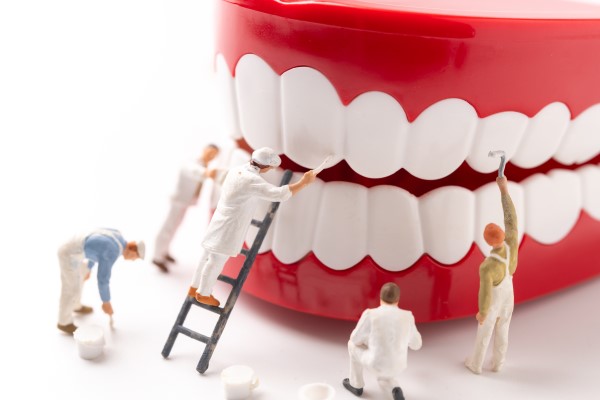What Is the Relationship Between Gum Disease and Diabetes?

Gum disease is one of the more common diseases in the world. The condition attacks the gums and bone supporting the teeth and is one of the leading causes of tooth loss in adults. Considering that mouth health is linked to overall wellbeing, there have been studies linking gum disease and diabetes. This article explores the relationship between the two conditions.
The relationship between gum disease and diabetes
People living with diabetes have a higher risk of developing gum disease. Inefficient management of blood sugar levels can create issues with the heart, blood vessels, nerves, kidneys, eyes, and feet. As well, the gums are not exempt.
Since high blood sugar levels can harm the blood vessels, it can also cut the supply of oxygen and nutrient to the gums, increasing the chances of infection in the gums and bones. Uncontrolled blood sugar levels can also increase the glucose level in the saliva, thus creating a breeding ground for bacteria, which are the primary cause of tooth decay and gum disease.
In turn, severe gum disease can adversely affect how the body controls blood sugar, and this may predispose the person to the risk of common long-term complications caused by diabetes. The inflammation of the gums resulting from gum infection is the body’s defense system fighting back, but it also affects blood sugar management. In simple words, gum disease and diabetes are linked in both directions.
Dental professionals typically recommend that patients inform them of a diabetes diagnosis and undergo comprehensive dental examination soon after. Patients living with diabetes should visit the dental office for regular dental checkups, especially for a review of their gum health. After a dentist discovers signs of gum disease, they can immediately initiate treatment and management procedures. Patients will require an intensive treatment plan and must visit the dentist more regularly than people who do not have gum disease and diabetes.
The cause of gum disease
A person’s genes can increase their risk of experiencing periodontal disease. Tobacco use, stress, and diabetes can contribute to this risk and worsen the condition.
Gum disease is mainly caused by dental plaque, which is a sticky film that forms on the teeth from the combination of bacteria, saliva, and food remnants. Plaque deposits should be cleaned off the teeth and gums regularly to prevent them from hardening in tartar or calculus. The bacteria in the plaque cause gum irritation, including symptoms like gum bleeding, redness, and swelling. Without proper treatment, the disease can worsen over time and damage the soft tissues and bone. Fortunately, gum disease is preventable and can be treated at the early stages.
Final note
Treating gum disease can be successful in people with diabetes with properly controlled blood sugar, just as with patients without diabetes. Proper blood sugar control increases the chances of successful gum disease treatment. Additionally, treating gum disease can lead to better sugar control in patients with poorly managed diabetes and reduce the risk of long-term complications. If you have been diagnosed with diabetes or noticed certain symptoms of gum disease, contact the dentist for treatment.
Request an appointment here: https://brimhalldentalgroup.com or call Brimhall Dental Group at (661) 249-1122 for an appointment in our Bakersfield office.
Check out what others are saying about our services on Yelp: Read our Yelp reviews.
Recent Posts
A denture repair should be your top priority when your denture breaks or becomes damaged. This prosthetic device fills out all the empty spaces in your mouth. It is crucial to care for your denture since the missing teeth can compromise your eating habits, speech, and appearance. This dental device is durable enough to handle…
Missing teeth can negatively impact your smile's appearance and health. However, there are treatments out there that can help. Dental bridges are a common dental restoration that can improve oral health and enhance your smile. A dental bridge can be an effective solution if you have lost a tooth due to decay, injury, or other…
A dental bridge is not a permanent restoration despite the changes that the neighboring natural teeth will go through for the treatment. However, there are different types available, each one capable of meeting your dental needs. Your dentist can present both permanent and removable options. Here are the details on the impermanence of a dental…
Dental bridges are long-lasting tooth replacements. However, like anything, they sometimes need to be repaired or replaced. A general dentist can install, maintain, and repair bridges to help patients get the most out of these effective dental restorations.Before understanding dental bridge repair, it is important to understand how dental bridges work as a restorative treatment.…


